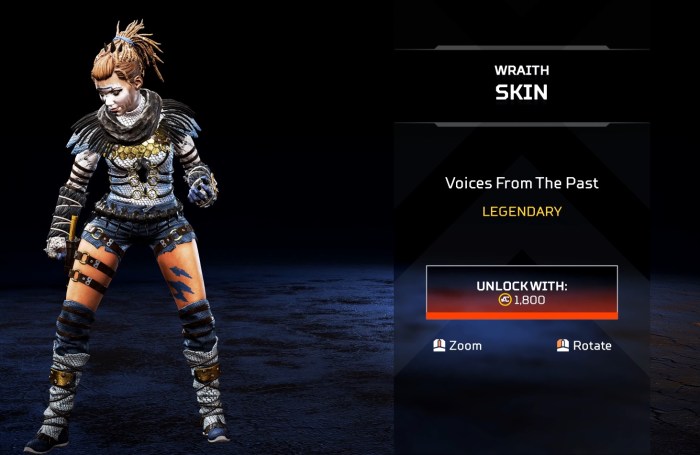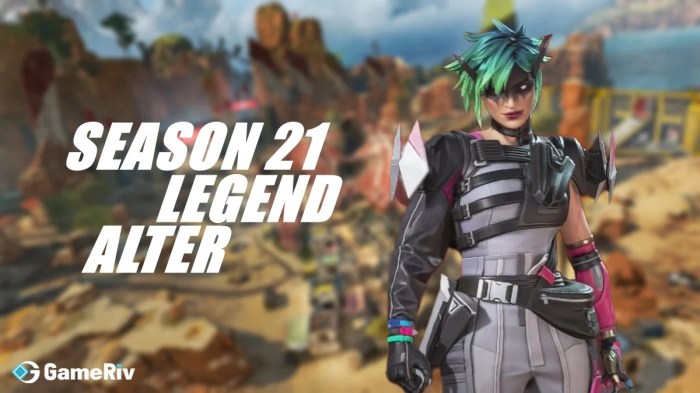Voice skins change gamers voice – Voice skins change gamers’ voices, transforming online interactions and adding a whole new layer to the gaming experience. Imagine shouting battle cries in the voice of a grumpy dragon or whispering secrets as a mischievous pixie – that’s the power of voice skins. This isn’t just about changing your tone; it’s about crafting a unique online persona, impacting gameplay, and even influencing how others perceive you in the virtual world. We’ll dive deep into the tech, the social dynamics, and the future of this increasingly popular gaming trend.
From the psychological impact of voice modification on player immersion to the technical challenges of real-time voice processing, we’ll explore every facet of voice skins. We’ll look at how different marketing strategies have fueled their popularity, the diverse design possibilities, and even the potential ethical considerations surrounding voice cloning and impersonation. Get ready to level up your understanding of the world of voice skins!
Technical Aspects of Voice Skin Implementation
Transforming a gamer’s voice in real-time presents a fascinating blend of audio engineering and software development. Creating and implementing a voice skin requires a sophisticated understanding of digital signal processing and efficient coding practices to deliver a seamless and high-quality user experience.
The process begins with recording high-fidelity audio samples of the desired voice. These samples are then processed using various techniques to achieve the desired sonic characteristics. This might involve applying filters to adjust the tone, pitch shifting to alter the vocal range, or even adding effects like reverb or echo to create a unique soundscape. The challenge lies in maintaining a balance between creative modification and preserving the clarity and naturalness of the original voice. Real-time processing adds another layer of complexity, requiring optimized algorithms to avoid noticeable latency or audio artifacts.
Voice Modification Techniques
Real-time voice modification employs several approaches, each with its strengths and weaknesses. One common method is using real-time pitch shifting and formant manipulation. This involves adjusting the fundamental frequency (pitch) and the resonant frequencies (formants) of the voice. Sophisticated algorithms, often based on phase vocoder techniques, are used to achieve this without introducing artifacts. Another technique is concatenative synthesis, where pre-recorded voice snippets are stitched together to create a modified voice. This method can produce very natural-sounding results but requires a large library of pre-recorded samples and efficient search algorithms to find the best matches in real-time. Finally, parametric synthesis allows for greater control over the voice’s parameters, offering a flexible but potentially less natural-sounding result. The choice of method often depends on the desired level of realism and the computational resources available.
Ensuring High-Quality Audio and Seamless Integration
Maintaining high-quality audio during real-time voice modification is crucial. Factors such as latency, audio artifacts, and processing power all play a significant role. Minimizing latency is paramount for a responsive and immersive gaming experience. This often requires highly optimized algorithms and efficient hardware acceleration. Audio artifacts, such as clicks, pops, or distortions, can detract significantly from the quality. Careful signal processing and noise reduction techniques are essential to mitigate these issues. The seamless integration of the voice skin into the game engine also poses a challenge. The voice skin application needs to interact effectively with the game’s audio pipeline, ensuring smooth transitions and compatibility with other audio effects.
Hypothetical System Architecture
A hypothetical voice skin application could be structured as a modular system. A core processing module would handle the real-time voice modification, utilizing optimized algorithms for pitch shifting, formant manipulation, or concatenative synthesis based on the chosen method. This module would interface with a library of voice samples or parameters. A separate module would manage the audio input and output, handling buffering, noise reduction, and latency compensation. A user interface module would allow users to select different voice skins, adjust parameters, and monitor the processing status. Finally, a communication module would handle integration with the game engine, sending and receiving audio data efficiently. This modular design would enhance flexibility, maintainability, and scalability. The system could be optimized for different hardware platforms by selecting appropriate algorithms and utilizing hardware acceleration features. For example, a high-end gaming PC might utilize a more computationally intensive method like parametric synthesis, while a mobile device would opt for a less demanding approach like concatenative synthesis with a smaller sample library.
Voice Skin Design and Customization: Voice Skins Change Gamers Voice
Giving gamers the power to truly personalize their in-game experience goes beyond just character skins and weapon choices. Voice skins offer a unique avenue for self-expression and immersion, allowing players to project a distinct personality or even alter their gameplay strategy through carefully crafted vocalizations. The design and customization options available for voice skins are key to their success.
Effective voice skin design requires a deep understanding of player preferences and the overall game aesthetic. This involves not only creating diverse vocal styles but also ensuring seamless integration with the game’s existing audio landscape. Personalization options should be intuitive and robust, allowing players to truly make the voice skin their own.
Diverse Voice Skin Concepts
A successful voice skin library needs variety to cater to diverse player tastes. Think beyond simple male/female options. We need to consider personality archetypes, fictional character inspiration, and even technological influences.
- The Gruff Veteran: A gravelly voice, seasoned with battle cries and sarcastic quips. Targets experienced players who appreciate a touch of dark humor.
- The Cheerful Robot: A bright, upbeat robotic voice with synthesized sound effects integrated into its speech. Appeals to players who enjoy a lighter, more comedic tone.
- The Mystical Sorcerer: A deep, resonant voice with echoing effects and subtle magical incantations woven into its dialogue. Attracts players drawn to fantasy themes and immersive roleplaying.
- The Playful Imp: A high-pitched, mischievous voice with giggling and teasing remarks. This caters to players who like a more lighthearted, chaotic experience.
Voice Skin Personalization Options
Allowing players to customize their voice skins significantly increases their appeal and longevity. Customization options should be varied and impactful, transforming a generic voice into a unique personal statement.
- Pitch and Tone Adjustment: Simple sliders to alter the fundamental characteristics of the voice, allowing for subtle or drastic changes.
- Sound Effect Integration: Players could add custom sound effects to punctuate their voice lines – think battle roars, magical spells, or even silly soundbites.
- Voice Line Modification: For more advanced customization, players might be able to replace certain phrases or emotes with their own recorded audio (subject to moderation, of course).
- Visual Customization: While the focus is audio, visual elements like a small icon representing the voice skin could also be customizable.
Voice Skin Types and Attributes, Voice skins change gamers voice
A well-organized table can help illustrate the diversity of voice skin options and their target audiences.
| Type | Description | Target Audience | Example Sounds |
|---|---|---|---|
| Robotic | Mechanized voice with electronic effects. | Players who enjoy sci-fi themes. | Whirring sounds, metallic clicks, synthesized speech. |
| Monster | Growls, roars, and guttural sounds. | Players who prefer aggressive or dark characters. | Deep growls, echoing roars, snarls. |
| Character-Based | Voices based on fictional characters (e.g., a pirate captain, a wise old wizard). | Players who enjoy roleplaying or specific character archetypes. | Accents, specific vocal inflections, character-specific dialogue. |
| Animalistic | Animal sounds integrated into speech. | Players who appreciate unique and expressive sounds. | Howls, chirps, growls mixed with human speech. |
Voice Skin Selection UI Integration
The user interface for selecting voice skins should be intuitive and visually appealing. It should showcase the available options clearly and allow for easy preview and selection.
- Dedicated Menu: A separate menu dedicated solely to voice skin selection, potentially with preview buttons to hear each voice.
- In-Game Store Integration: If voice skins are purchased, they could be showcased and purchased directly within the game’s store.
- Character Customization Screen: Voice skins could be integrated into the existing character customization screen, alongside other cosmetic options.
- Quick-Select Options: For frequently used voice skins, quick-select options could be added to the main HUD for easy access during gameplay.
Ultimately, voice skins are more than just a fun gimmick; they represent a significant evolution in how we interact within the digital gaming sphere. They offer players unprecedented levels of customization and self-expression, transforming the way we communicate and collaborate online. While challenges remain, particularly concerning ethical considerations and potential misuse, the future of voice skins in gaming looks bright, promising even more innovative ways to enhance our virtual identities and gameplay experiences. So, next time you’re choosing your avatar, consider the voice – it might just be the key to unlocking a whole new level of immersion.
 Tech Nest Online Berita Teknologi Terbaru
Tech Nest Online Berita Teknologi Terbaru

